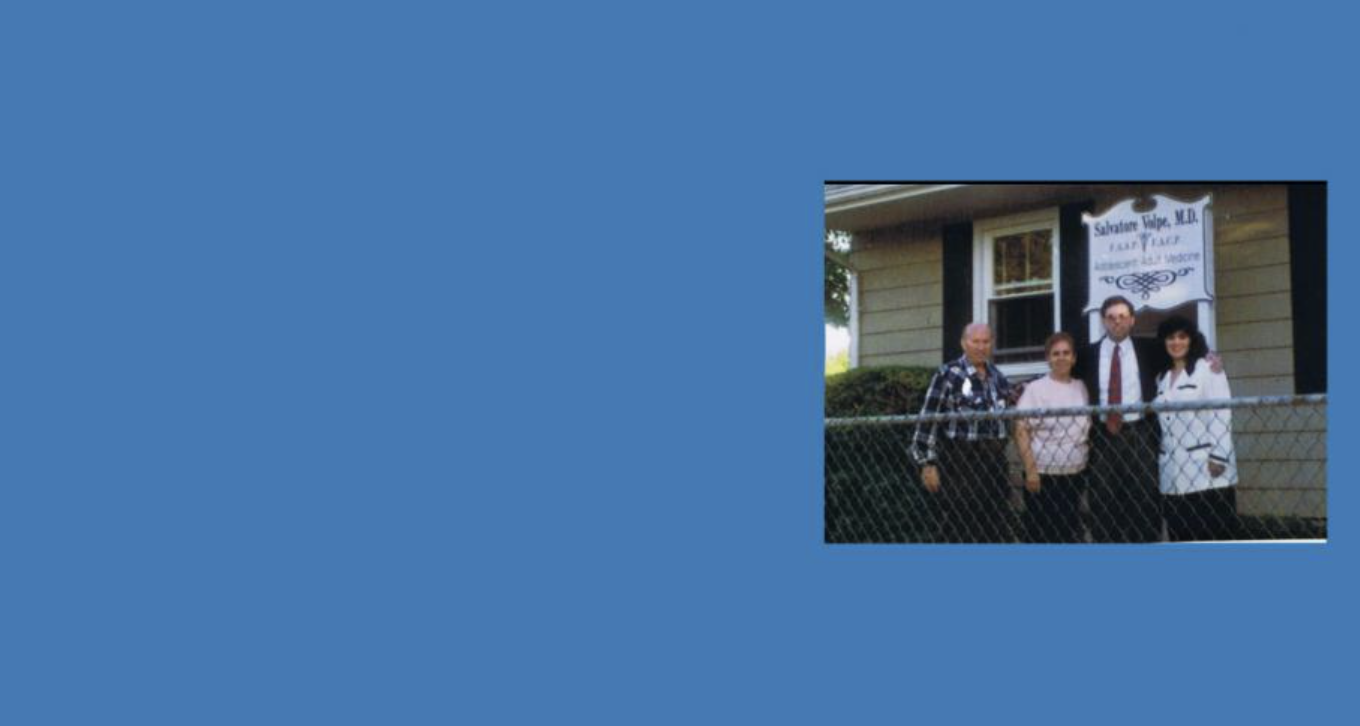
By Dr. Salvatore
Dr. Salvatore Volpe, MD, FAAP, FACP, CHCQM, a member of the Aledade Primary Care ACO, was selected by the Patient-Centered Primary Care Collaborative (PCPCC) as the 2016 recipient of its National PCMH Practice Award. Dr. Volpe is the chief medical officer at the Staten Island Performing Provider System and has run his own primary care practice in New York for more than 25 years. Below he explains his unique approach to running a primary care practice and how it’s changed over the years.

For me, a primary care physician and Staten Island “settler,” being recognized at the same ceremony as Dr. Paul Grundy and Dr. Edward Wagner is like being on stage with the Mickey Mantle and Joe DiMaggio of my profession.
Dr. Grundy is the godfather of patient-centered medical homes, or PCMHs, while Dr. Wagner wrote the book on Chronic Care and Care Coordination.
I am honored to receive PCPCC’s award, as I see it as a lifetime achievement award (even though I’m still practicing). And, I am humbled to be recognized, because all I ever set out to do was run a solo-physician primary care practice in my home town. Lastly, I am proud of the award as it marks how far my practice has come since its founding 25 years ago – especially our advances in care delivery, quality, and technology.
In my view, my practice has always been a PCMH in principle. However, it’s been a long-term, step-by-step process: achieving PCMH status, becoming the first solo-practice to achieve PCMH NCQA Level 3 in the nation, becoming chief medical officer of State Island Performing Provider System, and joining an Aledade ACO.
Through this, I have come to appreciate three keys to running a high-performing PCMH primary care practice: technology, care management and communication, and patient relationships
When I founded my practice there was no EHR. I used a medical manager practice system for billing and appointments, and that was it. However, I took advantage of a little-known feature in the system called notes, a place to leave details similar in length to a tweet today. With this, I could keep track of test results, reports, and patient information. I saved a lot of health care spending and improved patient health by having access to these notes whenever I got a call – during or after office hours.
When I finally got an EHR system in 2005, it was both a commitment and a risk. Not only was it a hefty investment for my small practice, but it would require hours of learning and workflow adjustment until my staff and I were fully comfortable with its utilization. The investment was worthwhile though, and many EHR system updates and other IT tools later, today I have technology that empowers my practice with data, insight, and analytics never before imagined. Due to this, I’ve become an advocate for EHRs and health information technology, which has lead me to many advocacy roles, including at the NYS Medical Society HIT Committee, the New York Chapter of HIMSS, and assisting Dr. Mostashari and the Aledade team in developing population health technology tools.
One area that improved technology has helped significantly is care management and communication. Through our EHR, HIE, and population health tools, my practice can better collect, manage, and analyze the patient information we need. A good example of this – involving both patient-to-provider and provider-to-provider communication – occurs when one of my patients is admitted to the hospital. Once notified, I call the hospital to speak with the ED doctor or hospitalist to coordinate care – by sending patient records, explaining health history, requesting a discharge summary, and letting patients know to follow up with my practice.
Today, population health management is driven by patient data and technology tools. I can use the EHR and care management tools to assess which patients are at risk due to chronic disease, recent ED or hospital visits, or even flu season, and ensure we are managing the risk. This means communicating with the patient via the phone, to check in or schedule a visit; during a visit, about health needs or prevention; or, for my practice, throughout our community.
Modernization and technology has certainly impacted my practice greatly, but it can only do so much. Primary care, like many professions, still comes down to the people. I pride myself on personal communication and relationship with my patients. My inspiration comes from the lesson of my parents, who, rather than being physicians, were blue-collar workers, but that took care of their friends and neighbors in the community. This example is how I operate my primary care practice. My patients are part of my community, as I live 15 minutes from my practice, and see them at church and the grocery store. Patient relationships like this are important for improving care as they build trust, as well as encourage open communication about health concerns – both mental and physical.
I consider primary care physicians to be the project manager of health. It’s through this approach, including my continued focus on advancing technology, care management, and strong patient relationships, I have been able to successfully lead a solo-physician primary care practice for over 25 years. Recognitions are always a gratifying surprise, and they only further motivate me to improve my practice and care for what matters most – my patients.
